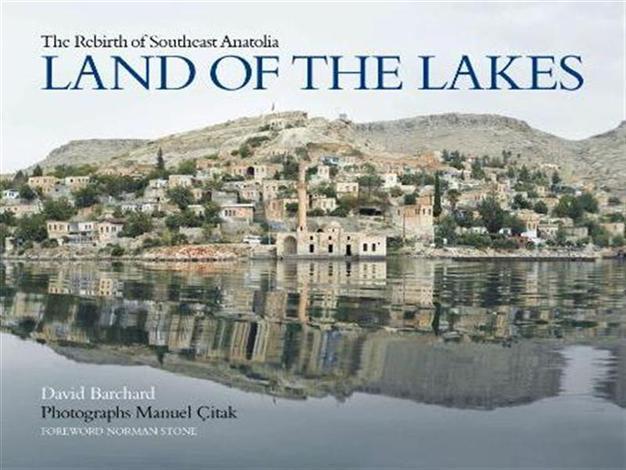The rebirth of southeast Anatolia ?
William Armstrong - william.armstrong@hdn.com.tr
 ‘The Rebirth of Southeast Anatolia: Land of the Lakes’ by David Barchard (Bristol Books, 2009, 60TL, pp 144)
‘The Rebirth of Southeast Anatolia: Land of the Lakes’ by David Barchard (Bristol Books, 2009, 60TL, pp 144)Mid-way through this book on the controversial Southeastern Anatolia Project (GAP), the author questions a local man about the displacements caused by the building of the Karakaya Dam on the Euphrates: “‘What happened to the people? Weren’t they upset?’ I asked our waiter. ‘They were all right,’ he told me. ‘They got the compensation money and went to the town with it. No one is sorry about what happened, because the whole region got richer as a result.’” This exchange is typical of the book’s positive overall tone – perhaps surprising to anyone familiar with the GAP project, which certainly has its fair share of critics.
GAP is an integrated development project in southeastern Turkey, designed to develop agriculture and irrigation, as well as hydroelectric power production and rural infrastructure. First initiated in the early 1970s, hundreds of billions of dollars have so far been spent on it, including the construction of 22 dams on the Euphrates and Tigris rivers. The project is transforming farming methods, the local economy, and Turkey’s energy provision, but it has also come in for some well-documented criticism. Thousands of people have been forcibly relocated over the course of the transformation (many reportedly without receiving any compensation whatsoever), numerous precious ancient sites have been flooded and lost forever, and countless endangered species in the region have either been lost or face imminent extinction. There’s also the not-insignificant fact that the agricultural changes have generally benefitted only large landowners, with most smaller farmers unable to benefit and therefore having to migrate to the cities to work as unskilled laborers.
Barchard dismisses these concerns with an airy wave of the hand, portraying GAP’s gainsayers as little more than pessimistic Cassandras. “Romantics in the Western world may shudder at this transformation of one of the oldest and most picturesque lands in the world,” he writes:
Coming from a world where prosperity and comfort are taken for granted, Westerners tend to view the changes with little affection and sometimes even open disapproval. That is easy to do when electricity, tap water, education, clothes and money in the bank are things you and your community have always known.
For him, GAP is the only lifeline available for a region that would otherwise be condemned to endless, remorseless poverty. He pulls no punches when addressing the legion of Western journalists lining up to condemn the project: “Given the abject poverty that persists in many villages in this region, one can only wonder at the strength of an international campaign against the dams – a campaign whose effect, if it were to succeed, would be to ensure that this region remained backward.” Even those locals forced to relocate are described by Barchard as being fully supportive of the changes: “With no exceptions … ordinary people in southeastern Turkey celebrate the changes that are making them part of the prosperous section of the modern world.” Adding to this determinedly optimistic hue are the beautiful, panoramic photographs of the region contributed by Manuel Çıtak.
It’s not possible to tell whether “The Rebirth of Southeast Anatolia” was funded by Turkey’s Ministry of Development, but Barchard’s endorsement is unequivocal. Still, for all GAP’s undoubted drawbacks (however frustratingly underexplored these remain here), its positive effects are equally incontestable. A simple Google-search will yield almost no positive reports in the Western media about the project, so with few others apparently willing to make that case, this book is certainly a bold undertaking. Nevertheless, Montaigne once wrote that “the birth, nourishment, and increase of each thing is the dissolution and corruption of another,” and this complex truth is absolutely the case with the GAP project. If Barchard had focused a little more on what is being lost, along with what is being gained, his conclusions would have been more subtle, and perhaps therefore more convincing.
Recommended recent release
Sherbet and Spice: The Complete Story of Turkish Sweets and Desserts (I.B. Tauris, 40TL, pp 256)
William Armstrong,
 ‘The Rebirth of Southeast Anatolia: Land of the Lakes’ by David Barchard (Bristol Books, 2009, 60TL, pp 144)
‘The Rebirth of Southeast Anatolia: Land of the Lakes’ by David Barchard (Bristol Books, 2009, 60TL, pp 144)